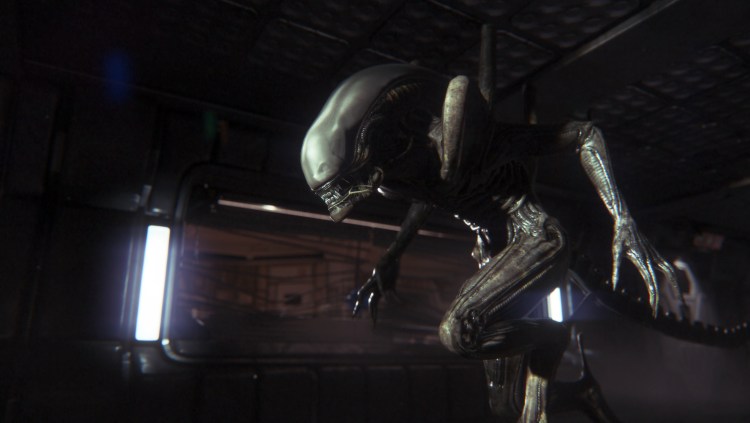Beyond a blunt-force weapon, Sevastopol’s modest resources scattered throughout the base offer just enough parts and scrap as adequate ingredients for practical items like med kits and pipe bombs. You have a finite amount of slots in which to hold these resources, which makes massive stockpiling impossible. Stockpiling was an issue in many mid-2000s survival horror games. Not knowing when the game would end would force some players to become ultra-conservative with their item use. Before you know it, you’re able to take down the final boss in 10 seconds and you’re left with tons of unused items and weapons. Having limited item slots not only forces you to use your items regularly, but it also promotes experimentation. Using a noisemaker to lure the alien away from you is one thing; it’s another to use a noisemaker to point the alien in the direction of other humans.
Doing more with less
Alien: Isolation is a game of limited options, not just with items but also in terms of how to approach a situation. Just like The Last of Us, Alien: Isolation’s leanings toward zero-detection stealth contrasts with the ambitious play-as-you-like designs of other sneaky adventure games like Thief and Splinter Cell: Blacklist. It doesn’t take long to look on the bright side and just be grateful that The Creative Assembly presented you with options at all. Most of these opportunities are revealed through general exploration, use of the maps, and experimentation. Once you know what the androids can or cannot withstand, now you know what you’re up against. How does that affect which items to craft next? Are you still better off sneaking past an android even if it’s a significant time investment with no assurances you’ll make it to the next save point?
You’re always making judgment calls, and it’s a situation that’s more complicated thanks to the often challenging placement of save points. Sure enough, these save points are more accessible during the very few moments of respite and less so when you have to deal with both the alien and the androids. Given the frequent anxiety in trying to reach, let alone find, save point, I can’t help but think The Creative Assembly put a lot of careful thought into these locations.
Beyond tools, save points, and modest firearms, you absolutely cannot underestimate the importance of Alien: Isolation’s sound. Just like the art direction, the music offers the same kind of fan-pleasing connective tissue to Ridley Scott’s film. The only sounds more menacing than the noise of the alien traversing the vents are the thumping steps as it roams the hallways. The sounds of these footsteps are based on a given floor surface and distance from the player. Use headphones or a home theater system; relying on your TV’s modest speakers will deprive you one of the best game audio experiences in recent years. It does have a couple of moments where both the sound and music were conflicting with each other, where I was confusing the ambient qualities of the score with environmental noises. I doubt this was what the studio intended, and these were issues that did not detract from my overall enjoyment of Isolation.
Conclusion
Alien: Isolation is still well rounded and comprehensive in its reverential use of the original 1979 film, even with its shortcomings. I cannot imagine any future Alien game attempting a similar feat with the same level of success. While the interlude made me question whether you can have too much fan service, I respect this kitchen-sink approach from The Creative Assembly. This sense of completeness is all the more affirmed by the DLC featuring the movie’s original cast (which I have yet to evaluate). Alien: Isolation’s ideal for those with the patience to deal with unpredictable behavior of the alien and who accept the inevitability that you will die once in a while through no fault of your own.
Score: 83/100
Alien: Isolation is out on Oct. 7 for the PlayStation 4, Xbox One, PlayStation 3,Xbox 360, and PC. Sega provided GamesBeat with a digital Xbox One copy of the game for the purposes of this review.
VentureBeat's mission is to be a digital town square for technical decision-makers to gain knowledge about transformative enterprise technology and transact. Learn More



